Today’s Current Affairs: 16th Oct 2023 for UPSC IAS exams, State PSC exams, SSC CGL, State SSC, RRB, Railways, Banking Exam & IBPS, etc
Table of Contents
INS Sagardhwani : Sagar Maitri Mission-4

INS Sagardhwani, an oceanographic research vessel embarked on a two-month long Sagar Maitri (SM) Mission-4 from South Jetty, Southern Naval Command (SNC), Kochi.
- It is a marine acoustic research ship designed and developed by Naval Physical & Oceanographic Laboratory (NPOL) of DRDO, Kochi and constructed indigenously by GRSE Ltd.
- It was launched in July 1994.
- The NPOL is involved in studying the ocean environment and other related fields.
- The vessel has been engaging in extensive oceanic observing missions and research for the last 25 years.
- Sagar Maitri is a initiative of the Defence Research and Development Organisation (DRDO).
- It supports the broad objective of India’s policy declaration ‘Security and Growth for All in the Region (SAGAR)’ to promote closer cooperation in socio-economic aspects as well as more significant scientific interaction, especially in ocean research among Indian Ocean Rim (IOR) countries.
- Under the aegis of this policy, DRDO initiated a scientific component named ‘MAITRI (Marine and Allied Interdisciplinary Training and Research Initiative)’, which focuses on establishing long-term collaboration with IOR countries in the field of ‘Ocean Research and Development’.
- The missions aim to establish long-term scientific partnerships and collaborations with Oman, the Maldives, Sri Lanka, Thailand, Malaysia, Singapore, Indonesia, and Myanmar the eight IOR countries.
- The current mission (SM-4) plan includes scientific deployments onboard INS Sagardhwani in the Northern Arabian Sea and initiating collaborative research programmes with the Department of Marine Sciences & Fisheries at Sultan Qaboos University, Oman.
Passport To Earning (P2E) Initiative:
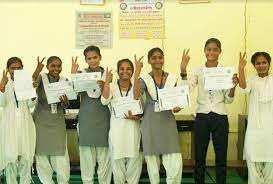
UNICEF’s global learning-to-earning solution, Passport to Earning (P2E), has skilled and certified more than one million young people in India in areas of financial literacy and digital productivity.
- Aligned with the National Education Policy (NEP) 2020, the P2E program offers free access to certificate courses in digital productivity, financial literacy, employability skills, and other in-demand, job-ready skills.
- Notably, 62% of the beneficiaries of P2E courses in India are adolescent girls and young women.
- With the goal of providing long-term sustainable skills to 5 million youth in India aged 14-29 by 2024 and connecting them to employment and entrepreneurship opportunities, P2E is a vital contribution to the nation’s educational and economic landscape.
Setu Bandhan Scheme: CRIF
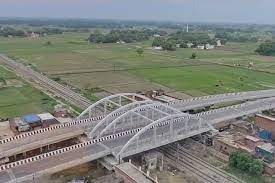
The Ministry of Road Transport & Highways has disclosed the approval of seven crucial bridge projects in Arunachal Pradesh under the Setu Bandhan Scheme under Central Road and Infrastructure Fund (CRIF).
- These projects, with a combined cost of Rs 118.50 Crores, are slated for implementation during the fiscal year 2023-24.
- The Central Road and Infrastructure Fund (earlier known as Central Road Fund) was established in 2000 under Central Road Fund Act, 2000.
- The fund comprises a cess imposed along with excise duty on petrol and diesel.
- The administrative control of the CRIF falls under the Ministry of Finance.
- Earlier it was under the domain of the Ministry of Road Transport and Highways.
- The amendment renamed the Central Road Fund as Central Road and Infrastructure Fund (CRIF).
- It allowed using the proceeds of the road cess under CRIF to finance other infrastructure projects including waterways, some portion of the railway infrastructure and even social infrastructure including educational institutions, medical colleges etc.
Setu Bandhan Scheme:
- The “Setu Bandhan Scheme” is a program initiated by the Ministry of Road Transport & Highways, aimed at facilitating the construction of Rail Over Bridges (ROBs), Rail Under Bridges (RUBs), and Bridges on State Roads.
- This program is designed to enhance road safety by replacing existing level crossings with bridges, ultimately reducing accidents at these locations.
Remote EVM (R-EVM) : Issues Related To Domestic Migrant Voting

The Election Commission of India (ECI) proposed a Remote EVM (R-EVM) to address issues related to domestic migrant voting. The goal was to improve the 67.4% voter turnout in the 2019 general election.
- A survey by Lokniti-CSDS was conducted in September 2023, involving 1,017 migrants living in Delhi’s slums, with 63% men and 37% women, aiming to understand whether the proposed R-EVM system would gain a viable level of trust among its intended users, setting aside legal and logistical concerns raised by political parties.
- Remote EVM (R-EVM) stands for “Remote Electronic Voting Machine.” It is a proposed system by the Election Commission of India (ECI) aimed at facilitating voting for domestic migrants who are unable to vote in their home constituencies due to their current location away from their registered constituencies.
- The R-EVM is designed to address the issue of domestic migrant voting, allowing registered voters who have moved away from their home constituencies to cast their votes remotely.
- Voters interested in using the remote voting facility must register (online or offline) within a pre-notified timeframe with the concerned Returning Officer (RO) of their home constituency.
- A multi-constituency remote polling station will be set up in the area of the voter’s current residence, allowing for remote voting from that location.
- The RVM can handle multiple constituencies (up to 72) from a single remote polling booth, making it efficient for voters from different constituencies to cast their votes at the same location.
- When the voter scans their constituency card in the presence of the Presiding Officer at the remote polling station, the respective constituency and candidate list will appear on the RVM display.
- The RVMs have the same security system and voting experience as the existing EVMs and use electronic ballot display to present candidates and their symbols instead of a fixed paper ballot sheet.
- The system will count and store the votes for each candidate in a constituency.
Poorvottar Sampark Setu Portal:
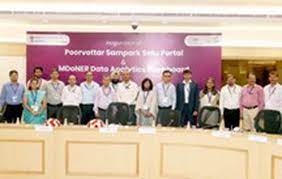
The Union Ministry of Development of North-East Region virtually launched “MDoNER Data Analytics Dashboard” and “Poorvottar Sampark Setu” portal at Vigyan Bhawan, New Delhi.
- It is a powerful tool designed to streamline and enhance monitoring of Fortnightly visits of Union Ministers to NER.
- Features:
- The dashboard provides valuable insights and graphical information about State-wise/ District-wise visits to the North Eastern Region by Union Ministers to be used by all the stake holders in one place.
- The portal generates a curated list of Ministers who can be nominated for visit to NER in the upcoming months.
- After the visit, the Minister can submit their tour reports along with their recommendations online.
- MDoNER can forward the recommendations to respective line Ministries/Departments/State Governments for quick action, after analyzing the same.
- The Portal generates the summary report .
Continuously Operating Reference Stations (CORS) Network:
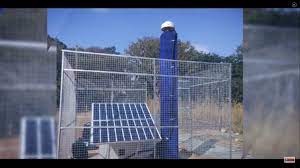
The Union Minister of State (Independent Charge) Science & Technology launched the state-of-the-art National Survey network of Continuously Operating Reference Stations” (CORS).
- It is capable of precise Location based services, which are capable of providing centimetre level positioning services in real-time
- These stations will be operated by the Survey of India.
- The Survey of India has set up more than 1,000 CORS stations across India.
- These stations are capable of providing Real Time Positioning Service.
- The CORS network is available 24 /7 throughout the year.
- CORS based precision services will boost auto navigation and machine control-based solution in Agriculture, Mining, Construction, Transport and Civil Aviation sector.
- This will open new domains of innovation and research and create a Geospatial based ecosystem in these sectors.
- CORS data will also aid in various scientific studies like Upper Atmosphere and Space weather studies, Meteorology and weather forecast, Plate motion and Tectonic studies, Seismology and Hydrology etc.
President’s Colours Award:
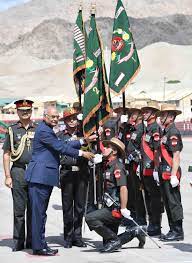
The Chief of Army Staff recently presented the prestigious ‘President’s Colours’ to the Third Battalion of the Naga Regiment.
- President’s Colours Award is the highest honor that can be awarded to any military unit, military training establishments, or state/UT Police Forces of India.
- It is bestowed upon a military unit in recognition of exceptional service rendered to the nation, both in peace and in war.
- It is also known as “Rashtrapati ka Nishaan” in Hindi.
Draft Green Credit Programme : Implementation Rules

The Central Government recently proposed Draft Green Credit Programme Implementation Rules.
- GCP aims to promote a sustainable lifestyle through a market-based mechanism.
- As per the scheme, individuals, industries, farmers producer’s organisations (FPOs), urban local bodies (ULB), gram panchayats, and the private sector, among a host of other entities, will be able to earn green credit for undertaking environment-friendly actions.
- Green credits generated through such actions can be traded on a domestic market platform.
- These Green Credits will be over and above the current discourse of carbon credits. Any activity generating green credits under the GCP will also receive carbon credits under the Carbon Credit Trading Scheme if it leads to the reduction or removal of carbon emissions.
- The green credits generated or procured by industries, companies and other entities to fulfil any legal obligation cannot be traded.
- Implementing Agency: The Indian Council of Forestry Research and Education (ICFRE), an autonomous organisation under the MoEFCC, is responsible for effectively implementing the Green Credit programme, including its management and operation.
Amur falcon : World’s Longest Travelling Raptors
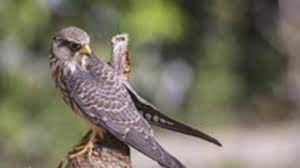
The Manipur Forest Department will carry out a head count of Amur falcons-the world’s longest travelling raptors- in Tamenglong district.
- It is a small raptor of the falcon family.
- Locally known as Akhuipuina, the bird arrives mainly in Manipur and Nagaland.
- They breed in south-eastern Siberia and Northern China and migrate long distances in large flocks to winter in Southern and East Africa.
- The one-way journey via India is about 20,000 km long and the birds do this twice a year.
- Conservation efforts: It is protected under the Wildlife Protection Act 1972 and included under its Schedule IV.
- IUCN: Least Concern.
Saraswati Samman Award 2022:
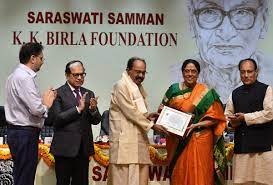
Tamil writer Sivasankari was presented with the ‘Saraswati Samman’ 2022 for her book of memoirs Surya Vamsam.
- Saraswati Samman Award is given annually for outstanding literary works in 22 Indian languages in the last 10 years.
- It is among the highest recognitions in the field of Indian literature.
- The selection follows a rigorous three-tier process leading up to a final decision by Chayan Parishad
- It was instituted by the K. Birla Foundation. (the Vyas Sammanand the Bihari Puraskar are other literary awards instituted by the foundation.)
- It carries a citation, a plaque and prize money of 15 lakh rupees.
- Sivasankari’s literary career spans over five decades.
- She is the author of 36 novels, 48 novellas, 150 short stories, 15 travelogues, seven collections of essays, and three biographies.
Palk Strait : Ferry Service
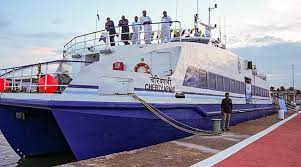
India and Sri Lanka recently launched a ferry service across the Palk Strait under a new roadmap for greater connectivity.
- Palk Strait is a strait that lies between the Tamil Nadu state of India and the island nation of Sri Lanka.
- The strait is named after Robert Palk, who was a governor of Madras Presidency (1755-1763) during the British Raj period.
- It is bounded on the south by Pamban Island (India), Adam’s (Rama’s) Bridge (a chain of shoals), the Gulf of Mannar, and Mannar Island (Sri Lanka).
- It connects the Bay of Bengal in the northeast with the Gulf of Mannar in the southwest.
- The southwestern portion of the strait is also called Palk Bay.
- The strait is 40 to 85 miles (64 to 137 km) wide, 85 miles long, and less than 330 feet (100 metres) deep.
- Several rivers flow into it, including the Vaigai River of Tamil Nadu.
- The port of Jaffna, the commercial centre for northern Sri Lanka, lies on the strait.
David’s Sling Air-Defense System:

Israel recently confirmed using its David’s Sling air-defense system to intercept a Hamas rocket.
- David’s Sling is an Israeli medium-range air defense system designed to defeat short-range ballistic missiles, large-caliber rockets, and cruise missiles.
- Co-developed with the United States, it occupies middle part of Israel’s sophisticated and multi-layer air-defense network, between the point-defense Iron Dome and upper-tier Arrow systems.
- It incorporates a vertical missile firing unit, a fire control radar, a battle management/operator station, and the Stunner interceptor.
- Each firing unit can hold up to 12 missiles.
- It is designed to intercept ballistic and cruise missiles at ranges of 40 to 300 km.
- It uses a three-pulse solid propellant motor to reach speeds of up to Mach 7.5; its first two pulses accelerate the missile through its initial trajectory while the third activates to maneuver the interceptor and increase speed prior to intercept.
- Unlike Iron Dome’s, Stunner has no warhead, defeating targets by striking them directly.
- Each Stunner missile costs an estimated $1 million to produce.




